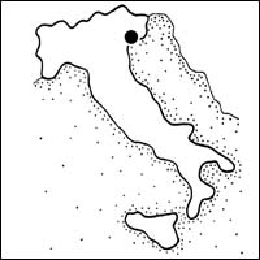Travel Reference
In-Depth Information
Soak all day in this puddle of elegant decay. Venice is Europe's best-preserved big city. This
car-free urban wonderland of a hundred islands—laced together by 400 bridges and 2,000
alleys—survives on the artificial respirator of tourism.
Born in a lagoon 1,500 years ago as a refuge from barbarians, Venice is overloaded with
touristsandisslowlysinking(notbecauseofthetourists).IntheMiddleAges,theVenetians
became Europe's clever middlemen for East-West trade and created a great trading empire.
By smuggling in the bones of St. Mark (San Marco) in
A.D.
828, Venice gained religious
importance as well. With the discovery of America and new trading routes to the Orient,
Venetianpowerebbed.ButasVenicefell,herappetitefordecadencegrew.Throughthe17th
and 18th centuries, Venice partied on the wealth accumulated through earlier centuries as a
trading power.
Today, Venice is home to 58,000 people in its old city, down from about twice that num-
ber just three decades ago. While there are about 270,000 people in greater Venice (count-
ing the mainland, not counting tourists), the old town has a small-town feel. Locals seem to
know everyone. To see small-town Venice away from the touristic flak, escape the Rialto-
San Marco tourist zone and savor the town early and late, without the hordes of vacationers
day-trippinginfromcruiseshipsandnearbybeachresorts.A10-minutewalkfromthemad-
ness puts you in an idyllic Venice that few tourists see.

